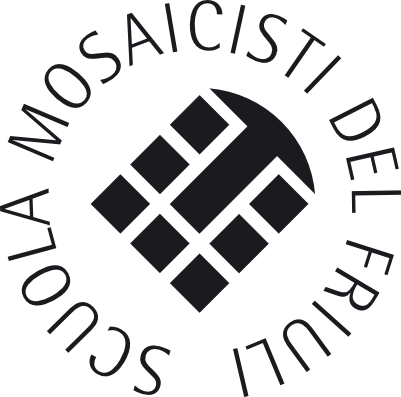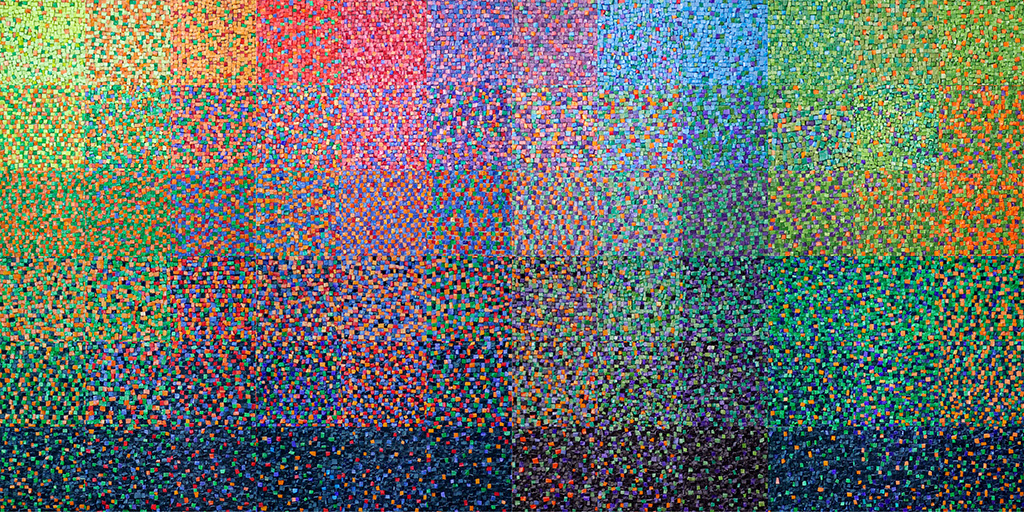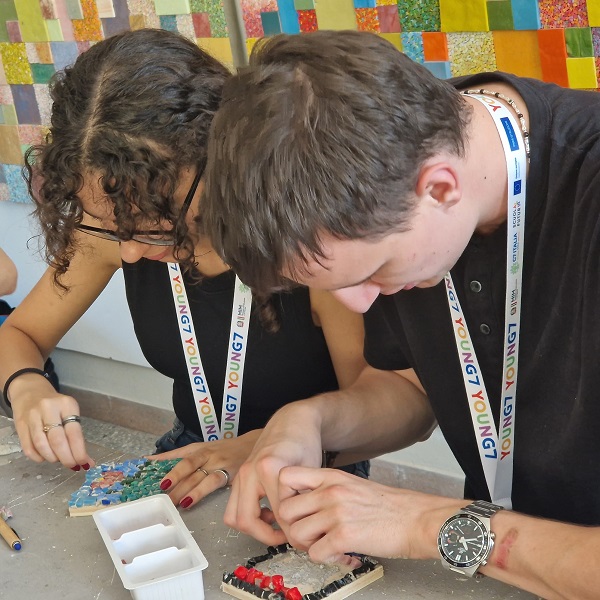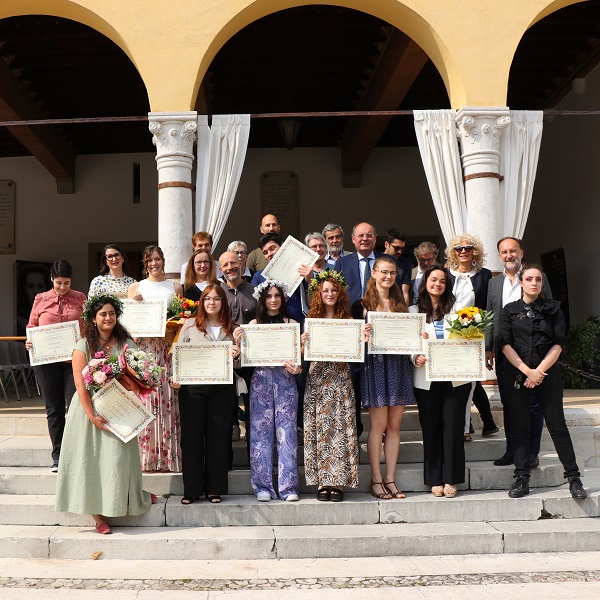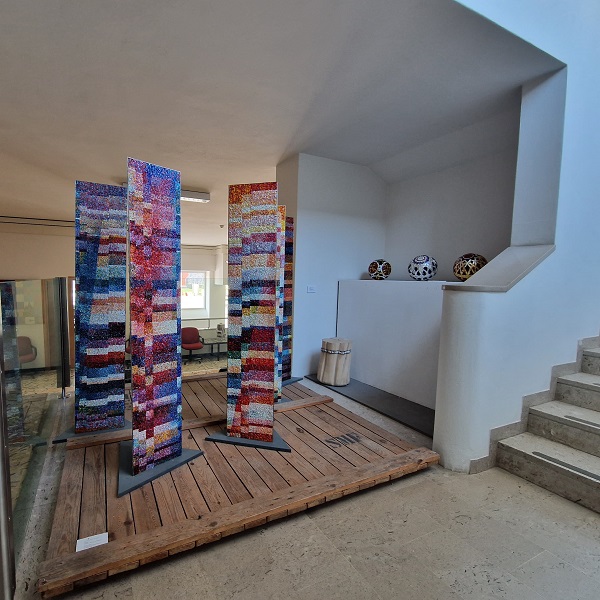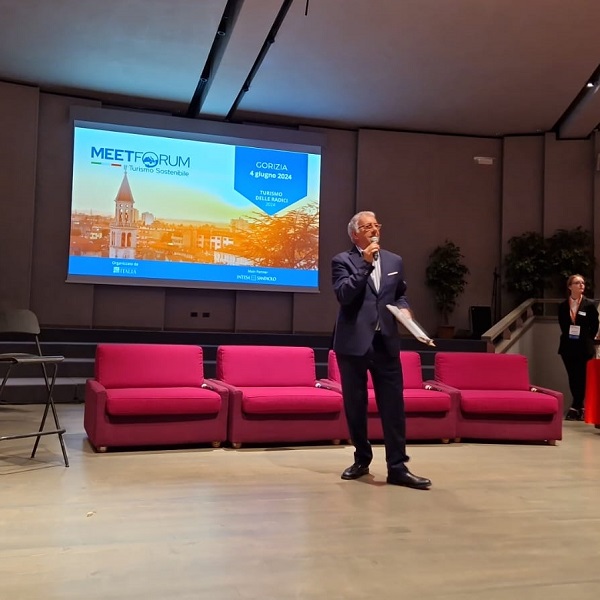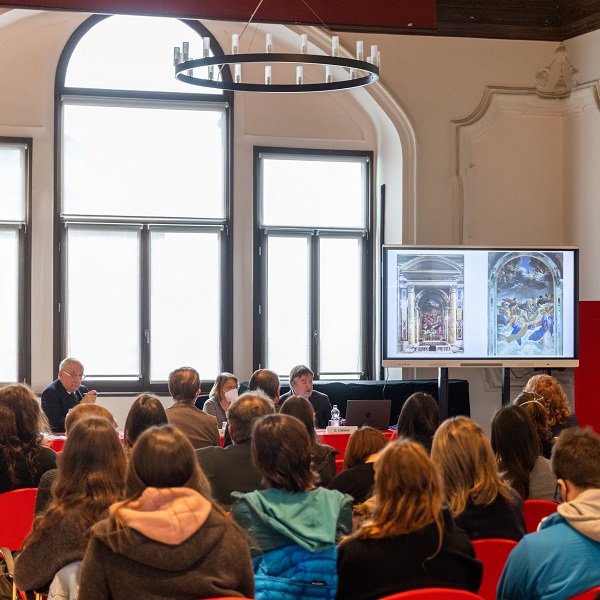
A comparison between arts: tapestry and mosaic
The first appointment in the series of study meetings dedicated to the art of mosaic and organized by the Scuola Mosaicisti del Friuli was held this morning at Palazzo Tadea in Spilimbergo.
Special guests were Anna Maria De Strobel and Guido Cornini, art historians and officials of the Musei Vaticani (Vatican Museums), respectively the curator of the Tapestries and Textiles Department and the Head of the Arts Department of the Musei Vaticani (Vatican Museums).
After the greetings of the president of the Scuola Mosaicisti del Friuli, Stefano Lovison, and of the Mayor of Spilimbergo, Enrico Sarcinelli, the moderator of the conference, the architect Paolo Coretti, highlighted how the two artistic techniques, that of mosaic and that of tapestry, although different in materials and methods of execution, find a common origin in the project that precedes each creation and which is realized in the sketch, in the cardboard and in the model. He also recalled how the Scuola Mosaicisti del Friuli has for several years started a study on the relationship between tapestry and mosaic which took shape in the A.F. 1997/1998 in a large mosaic panel Le vin du monde made from a tapestry cartoon by Jean Lurçat, an important contemporary tapestry maker, a panel that is now on display in the external space of the School.
The speakers with an intervention supported by beautiful images demonstrated how mosaics and tapestries, in Renaissance Rome and the following centuries, shared executive procedures, iconographic choices and functions. The two arts in the official manufactories to which both the papal court and the Roman noble families turned, proceeded in parallel. Tapestry makers and mosaicists looked to common patterns often made by skilled draftsmen and painters who copied the masterpieces of the best known painters. The master craftsmen had the task of reproducing with tesserae or threads the image of the cardboard that could vary in size, color and purpose: from smaller formats to give gifts to illustrious visitors, to large panels or tapestries that covered walls embellished spaces, they replaced altarpieces, canvases and murals.
The precision and accuracy of the interpretations in mosaic or tapestry is astonishing compared to the pictorial originals that the comparison of the reproductions proposed by the two historians has made evident. From the report also emerged the chemical skills and technical procedures that these master tapestry makers and mosaicists possessed and handed down: from the knowledge of yarn dyes, to the mixtures to create different shades of enamels and thus not depend on Venetian supplies.
It also emerged that up to the nineteenth century there was no clear distinction between major and minor arts, between artistic and artisan skills, but every intervention, precisely because of its importance and representativeness, had equal dignity and was always resolved to the maximum of its possibility. both in the choice of materials and in the iconographic expressiveness and in the care and executive perfection.
The second appointment of this series of in-depth studies will be held on Thursday 21 April at 10.30 at Palazzo Tadea and will focus on on training with a round table with the main Italian institutions that deal with transmitting the art of mosaic: the Academy of Fine Arts in Ravenna, the “Mario D’Aleo” artistic high school in Monreale (Palermo) and the Scuola Mosaicisti del Friuli.
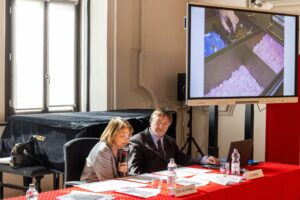
20 April 2022


